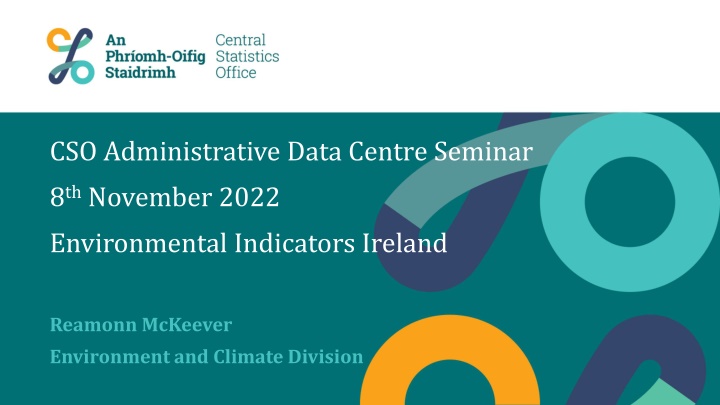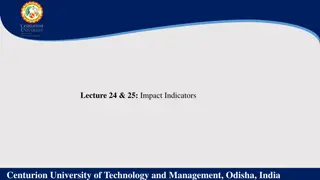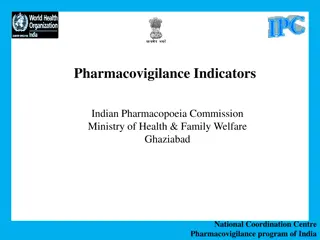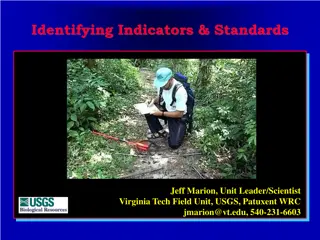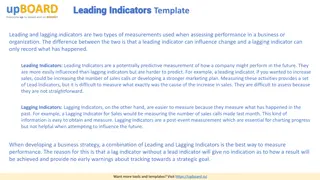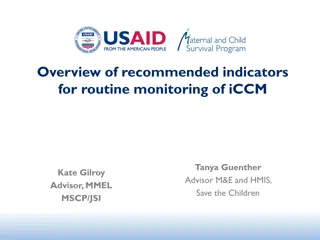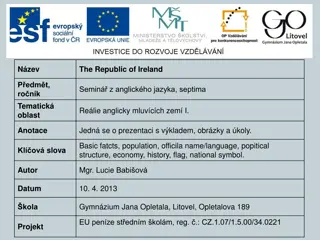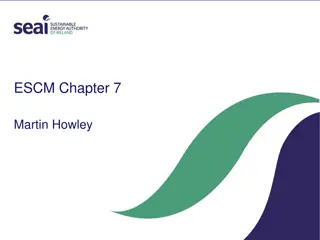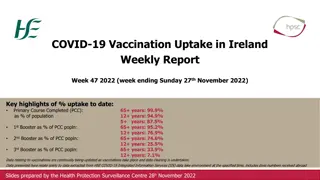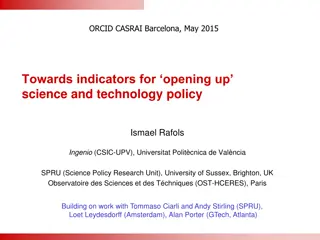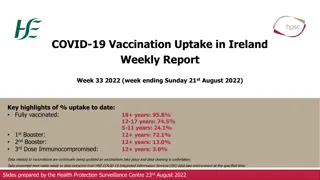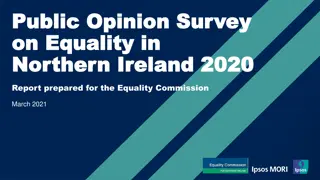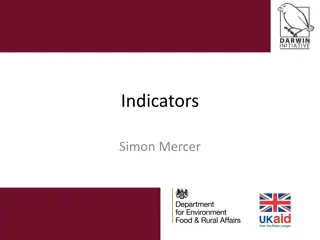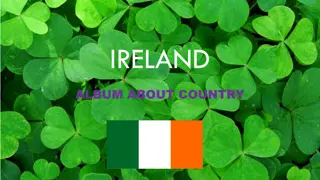Environmental Indicators Report Ireland 2022 Overview
The Environmental Indicators Report for Ireland 2022 provides a detailed analysis across various domains including Global Context, Environmental Economy, Greenhouse Gases, and Climate Change. Key findings highlight trends in environmental indicators, data collection methods, and significant statistics related to environmental taxes, greenhouse gas emissions, and more. This comprehensive report aims to showcase Ireland's environmental performance in comparison to the EU and other countries.
Download Presentation

Please find below an Image/Link to download the presentation.
The content on the website is provided AS IS for your information and personal use only. It may not be sold, licensed, or shared on other websites without obtaining consent from the author.If you encounter any issues during the download, it is possible that the publisher has removed the file from their server.
You are allowed to download the files provided on this website for personal or commercial use, subject to the condition that they are used lawfully. All files are the property of their respective owners.
The content on the website is provided AS IS for your information and personal use only. It may not be sold, licensed, or shared on other websites without obtaining consent from the author.
E N D
Presentation Transcript
CSO Administrative Data Centre Seminar 8thNovember 2022 Environmental Indicators Ireland Reamonn McKeever Environment and Climate Division
Overview The Environmental Indicator Report was first published in 2012. It is a comprehensive account of key environmental indicators over time in Ireland in comparison with the EU and other states The 2022 Report contains 69 indicators across ten domains: Global Context Environmental Economy Air Greenhouse gases and climate change Water Land Use Energy Transport Waste Biodiversity 2
Data Collection Indicators are based on administrative data and survey data Key data sources include the CSO, EPA, SEAI, BirdWatch Ireland, DAFM and Eurostat National data are given in a time series format ideally back to around the year 2000 so as to show long-term trends. International data are typically for one year and show how Ireland compares with other countries International data are downloaded from Eurostat, United Nations etc. websites 3
Global Context Domain looks at World trends by: Population - region, Population - child mortality, Population - life expectancy, Climate - surface temperature, and Greenhouse gas emissions. Indicators show that there are more people and they are living longer. World population increased by 210% from 2.5 billion in 1950 to 7.9 billion in 2021. World life expectancy increased form 47 years in 1950-1955 to 72 years in 2015-2020 4
Environmental Economy Domain covers mainly CSO statistics including environmental taxes, environment subsides, fossil fuel subsidies, material flow accounts, building energy ratings and utility meter data Environmental taxes represented 5.5% of total taxes in 2021 98% of dwellings built in 2015-2021 were A rated Power plants accounted for 61% of gas consumption in 2021 Large energy users used 23% of electricity consumption in 2021 6
Greenhouse Gases and Climate Change Ireland s greenhouse gas emissions was 61.5 million tonnes of CO2 equivalent in 2021, up by 5% on the 2020 figure of 58.8 million tonnes and by 11% on the 1990 figure of 55.2 million tonnes. In 2020 Ireland had the second worst emissions of greenhouse gases per capita in the EU27 at 11.6 tonnes of carbon dioxide equivalent per capita. Agriculture was the sector with the highest greenhouse gas emissions in Ireland in 2021 accounting for 38% of the total emissions. Transport was the next most significant source of greenhouse gas emissions, doubling from 9% of total emissions in 1990 to 18% in 2021. 7
Water In 2021, 91% of bathing water sites surveyed had good water quality and 97% had sufficient water quality. The quality of drinking Water supplies can be measured by looking at E.coli and trihalomethane levels. The compliance rate of public water supplies for THM s was 97.3% in 2020. However, the compliance rate for THM s in 2020 private group water supplies was 93.5% in 2020. while that for public group water supplies was 89.4%. There has been a significant improvement in the level of treatment of urban waste water. In 2021 just 1% of urban waste water received either no treatment or preliminary treatment compared with 46% in 1997. The proportion of rivers and streams with high water quality declined from 27% in 1987-1990 to 17% in 2017-2020. 9
Land Use Forestry accounted for 11% of Ireland s total land area in 2020, the third lowest among EU Member States after Malta and the Netherlands. Finland had the highest proportion of land area under forest at 66% in 2020. The area of agricultural land farmed organically in Ireland increased four-fold between 1997 and 2021 when it reached 2% of total agricultural land area. However, Ireland had the second lowest percentage of land farmed organically in the EU in 2020. In 2021 Ireland had the third highest number of cattle in the EU27 with 8.8% of the total and the fifth highest number of sheep in 2019 at 6.1% of the total. The number of new dwelling completions in Ireland increased by 193% from 6,994 units in 2011 to 20,473 units in 2021. 11
